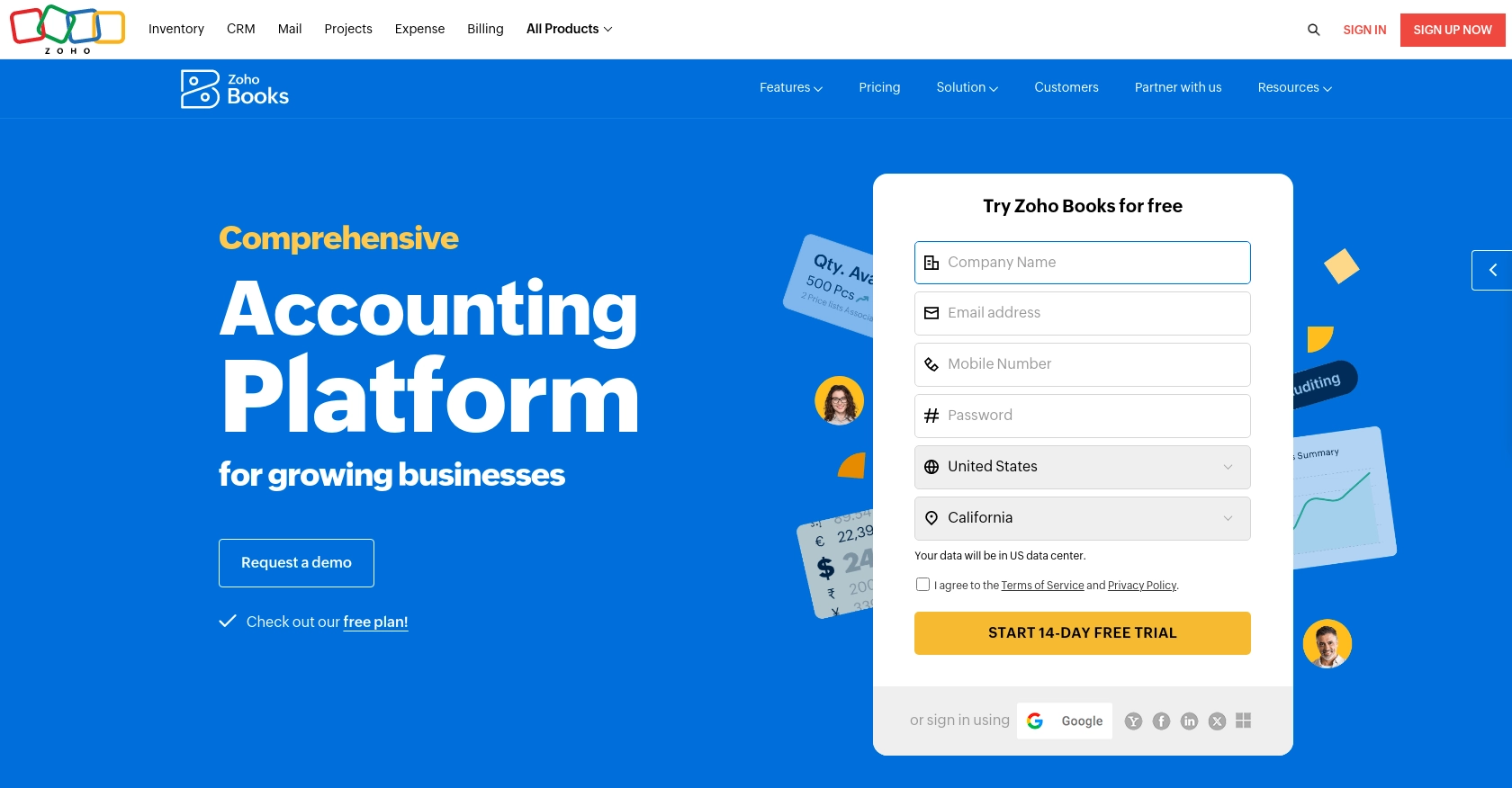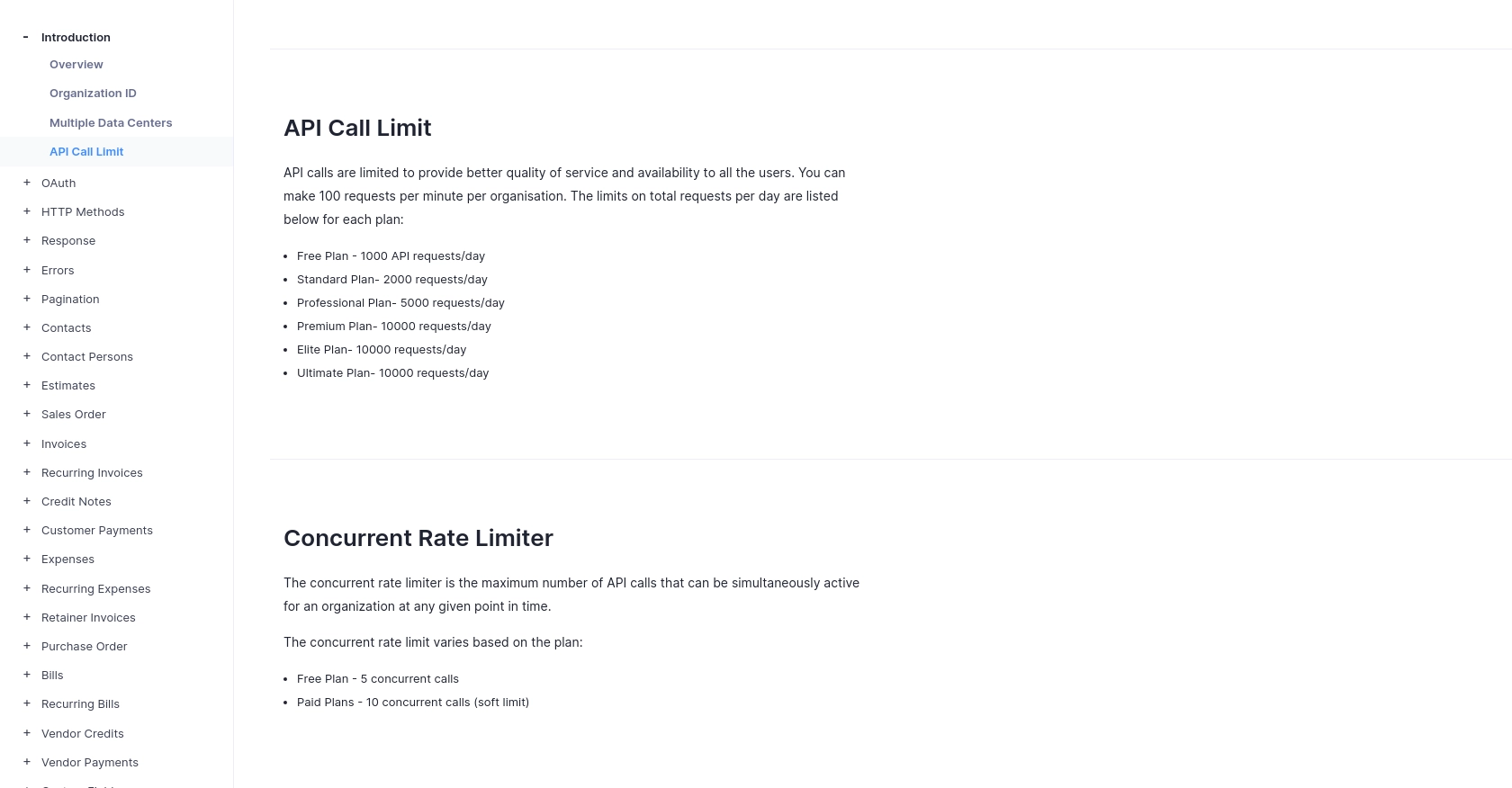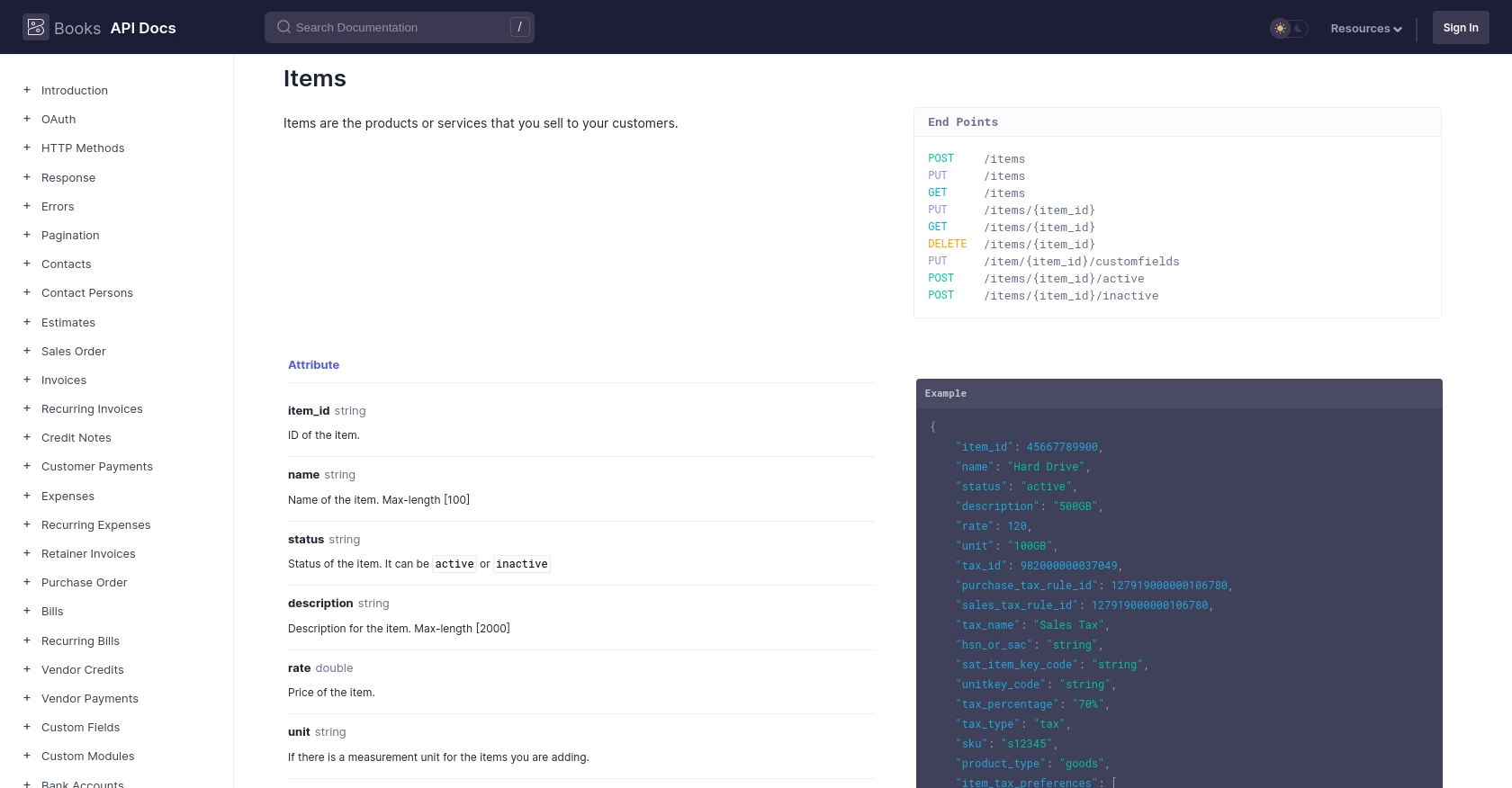Using the Zoho Books API to Get Items (with PHP examples)

Introduction to Zoho Books API
Zoho Books is a comprehensive cloud-based accounting software designed to streamline financial management for businesses. It offers a wide range of features including invoicing, expense tracking, and inventory management, making it a popular choice for small to medium-sized enterprises.
Integrating with the Zoho Books API allows developers to automate and enhance various accounting processes. For example, you can use the API to retrieve a list of items, which can be useful for synchronizing inventory data with other systems or applications. This can help businesses maintain accurate and up-to-date records, ultimately improving operational efficiency.
Setting Up Your Zoho Books Test Account
Before you can start using the Zoho Books API to retrieve items, you'll need to set up a test or sandbox account. This allows you to safely experiment with API calls without affecting your live data.
Creating a Zoho Books Account
If you don't already have a Zoho Books account, you can sign up for a free trial on the Zoho Books website. Follow the instructions to create your account. Once your account is set up, log in to access the Zoho Books dashboard.
Registering a New Client in Zoho Developer Console
To use the Zoho Books API, you'll need to register your application in the Zoho Developer Console to obtain your Client ID and Client Secret.
- Go to the Zoho Developer Console.
- Click on Add Client ID and fill in the required details to register your application.
- Upon successful registration, you'll receive your OAuth 2.0 credentials, including the Client ID and Client Secret. Keep these credentials secure.
Generating OAuth Tokens for Zoho Books API
Zoho Books uses OAuth 2.0 for authentication. Follow these steps to generate the necessary tokens:
- Redirect to the following authorization URL with the required parameters:
- After user consent, you'll receive a code in the redirect URI. Use this code to request an access token:
- The response will include an access token and a refresh token. The access token is used for API calls, while the refresh token is used to obtain new access tokens when the current one expires.
https://accounts.zoho.com/oauth/v2/auth?scope=ZohoBooks.settings.READ&client_id=YOUR_CLIENT_ID&response_type=code&redirect_uri=YOUR_REDIRECT_URI&access_type=offline
https://accounts.zoho.com/oauth/v2/token?code=YOUR_CODE&client_id=YOUR_CLIENT_ID&client_secret=YOUR_CLIENT_SECRET&redirect_uri=YOUR_REDIRECT_URI&grant_type=authorization_code
Configuring API Access in Zoho Books
Ensure that your application has the necessary permissions to access the items in Zoho Books:
- Navigate to the API Credentials section in your Zoho Books account settings.
- Verify that the required scopes, such as
ZohoBooks.settings.READ, are enabled for your application.
With your Zoho Books account and OAuth credentials set up, you're ready to start making API calls to retrieve items. In the next section, we'll explore how to perform these API interactions using PHP.

sbb-itb-96038d7
Making API Calls to Retrieve Items from Zoho Books Using PHP
To interact with the Zoho Books API and retrieve items, you'll need to use PHP to make HTTP requests. This section will guide you through the process of setting up your PHP environment and executing API calls to fetch item data from Zoho Books.
Setting Up Your PHP Environment
Before making API calls, ensure you have the following prerequisites installed on your machine:
- PHP 7.4 or later
- Composer for dependency management
Install the Guzzle HTTP client, which simplifies making HTTP requests in PHP:
composer require guzzlehttp/guzzle
Fetching Items from Zoho Books API
With your environment ready, you can now write a PHP script to retrieve items from Zoho Books. Follow these steps:
Step 1: Define the API Endpoint and Headers
Set up the API endpoint and headers required for the request:
use GuzzleHttp\Client;
$client = new Client();
$endpoint = 'https://www.zohoapis.com/books/v3/items?organization_id=YOUR_ORG_ID';
$headers = [
'Authorization' => 'Zoho-oauthtoken YOUR_ACCESS_TOKEN'
];
Step 2: Make the GET Request
Use the Guzzle client to send a GET request to the Zoho Books API:
$response = $client->request('GET', $endpoint, ['headers' => $headers]);
$data = json_decode($response->getBody(), true);
Step 3: Handle the API Response
Process the response to extract and display item information:
if ($response->getStatusCode() == 200) {
foreach ($data['items'] as $item) {
echo 'Item Name: ' . $item['name'] . '<br>';
echo 'Description: ' . $item['description'] . '<br>';
echo 'Rate: ' . $item['rate'] . '<br>';
echo 'Status: ' . $item['status'] . '<br><br>';
}
} else {
echo 'Failed to retrieve items. Error: ' . $data['message'];
}
Verifying API Call Success in Zoho Books
To ensure the API call was successful, log in to your Zoho Books account and verify that the items listed in the response match those in your account. This confirms that the data retrieval process is functioning correctly.
Handling Errors and Rate Limits
It's important to handle potential errors and adhere to rate limits when making API calls. Zoho Books uses standard HTTP status codes to indicate success or failure:
- 200 OK: The request was successful.
- 401 Unauthorized: Invalid or expired access token.
- 429 Rate Limit Exceeded: Too many requests in a short period.
Refer to the Zoho Books API documentation for more details on error handling and rate limits.

Conclusion and Best Practices for Using Zoho Books API with PHP
Integrating with the Zoho Books API using PHP can significantly enhance your business's accounting processes by automating tasks and ensuring data consistency across platforms. By following the steps outlined in this guide, you can efficiently retrieve item data and integrate it with other systems.
Best Practices for Secure and Efficient API Integration
- Securely Store Credentials: Always keep your OAuth credentials, such as Client ID and Client Secret, secure. Avoid hardcoding them in your scripts. Instead, use environment variables or secure vaults.
- Handle Rate Limits: Zoho Books imposes rate limits to ensure fair usage. Be mindful of these limits (100 requests per minute per organization) and implement retry logic to handle rate limit errors gracefully. For more details, refer to the Zoho Books API rate limits documentation.
- Error Handling: Implement robust error handling to manage potential API call failures. Use the HTTP status codes provided by Zoho Books to identify and address issues promptly. Refer to the error documentation for guidance.
- Data Transformation: When integrating data from Zoho Books with other systems, ensure that data fields are standardized and transformed as needed to maintain consistency and accuracy.
Leverage Endgrate for Streamlined Integration
If managing multiple integrations becomes overwhelming, consider using Endgrate. With Endgrate, you can save time and resources by outsourcing integrations, allowing you to focus on your core product. Endgrate offers a unified API endpoint that connects to various platforms, including Zoho Books, providing an intuitive integration experience for your customers. Learn more about how Endgrate can simplify your integration needs by visiting Endgrate's website.
By following these best practices and leveraging tools like Endgrate, you can ensure a seamless and efficient integration process with Zoho Books, enhancing your business's operational efficiency and data management capabilities.
Read More
- https://endgrate.com/provider/zohobooks
- https://www.zoho.com/books/api/v3/introduction/#api-call-limit
- https://www.zoho.com/books/api/v3/oauth/#overview
- https://www.zoho.com/books/api/v3/errors/#overview
- https://www.zoho.com/books/api/v3/pagination/#overview
- https://www.zoho.com/books/api/v3/items/#overview
Ready to get started?
